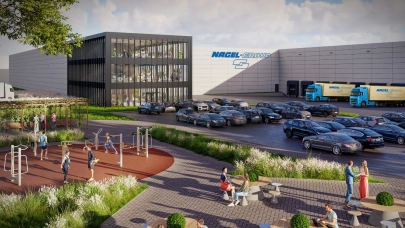
In the first quarter of 2025, Warsaw’s modern office stock reached 6.28 million square metres. Only one new project was delivered during this period - the CD Projekt HQ in the East office zone, contributing 5,600 sqm of new supply. The total office space under construction or renovation amounted to approximately 210,000 sqm. Gross demand reached 160,500 sqm, while the vacancy rate slightly decreased to 10.5 per cent quarter over quarter, say experts from Avison Young.
The market continues to show a moderate but stable development pipeline, with over 130,000 sqm of office space expected to be completed by the end of 2025. Limited office developments have been announced beyond 2027. A growing trend of refurbishing and repurposing older buildings has been noticed.
Demand
The City Centre and Central Business District (CBD) remained the most active areas, generating over 60 per cent of the city’s total leasing volume. Vacancy rates stood at 7.4 per cent in central zones and 13 per cent in non-central areas, with a total of nearly 660,000 sqm of vacant office space across Warsaw. When it comes to tenant branches, “Business services” led demand, making up 13 per cent of leased space, followed by “Banking, insurance, and investment” and “Manufacturing”, both at 10 per cent.
Demand structure
In terms of demand structure, new leases and pre-lets accounted for 49 per cent of total activity. “It seems that the next 2 to 3 years may bring some large pre-let transactions. Given the limited supply of new speculative developments, pre-letting may become the main route for tenants to secure office space that meets their preferences for location, design, and quality”, comments Robert Pastuszka, Director, Office Agency.
Lease conditions
Rental rates ranged from €22 to 28 (sqm/month) in central locations and from €16 to 19.5 in non-central areas. Prime rental rates, especially for top-floor offices, are exceeding €30 (sqm/month). Service charges average around PLN 27 (sqm/month).
Landlords’ market
The market is increasingly shifting in favour of landlords, with extended lease terms - particularly seven-year agreements - becoming more common. After years of tenants holding a strong negotiating position, the balance is changing. It is now more difficult to meet previously high negotiation expectations, as a tightening supply continues to drive rents upward and strengthen landlords’ leverage compared to previous years. While this evolution is a natural part of the property cycle, it introduces new challenges for tenants.
Time is crucial
For large organisations, early engagement in lease negotiations - even two to three years before current contracts expire - is becoming essential to secure the most suitable options. In contrast, smaller companies may benefit from streamlining their decision-making processes, enabling them to respond more swiftly to opportunities. Experience from recent years shows that delays in decision-making can unnecessarily prolong leasing timelines, making flexibility and speed critical to finding the right space.
What’s next
As the cost of tailoring office space to tenant requirements continues to rise, lease durations are getting longer. In newly built properties, seven-year agreements have become the standard, while existing buildings typically see contracts of no less than five years. Shorter leases, such as three-year terms, are now increasingly uncommon.
Looking ahead, Avison Young anticipates an upward adjustment of service charges due to the indexation – it will be more expensive. Renegotiations are becoming a larger share of the annual leasing volume.



